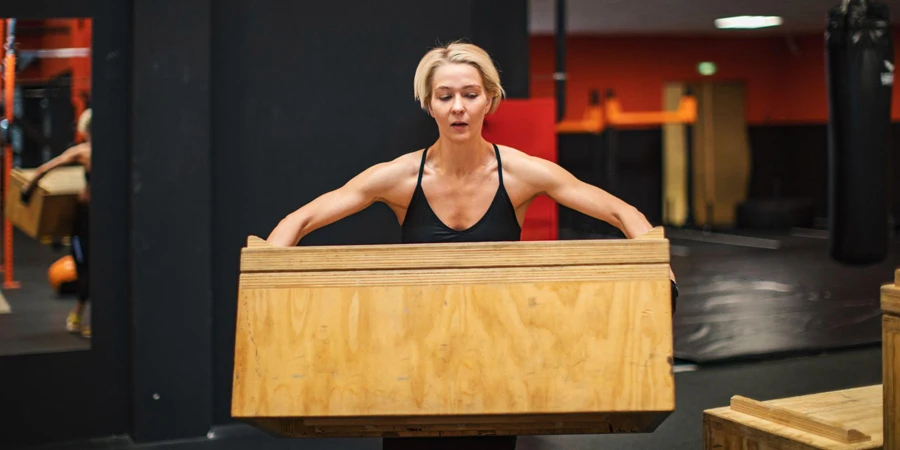Table of Contents
– Introduction
– Plyo Box Market Overview
– Essential Considerations for Selecting the Ideal Plyo Box
– Conclusion
Introduction
Choosing the right plyo box is crucial for gyms, fitness centers, and sports facilities looking to offer versatile and effective training equipment. As a business buyer, understanding the key factors to consider when selecting plyo boxes will help you make an informed decision that benefits both your clients and your bottom line. This guide will explore the essential aspects to keep in mind and introduce the top plyo box picks for 2024.
Plyo Box Market Overview
The global plyo box market has demonstrated robust growth, with a market size valued at $219.3 million in 2021. This dynamic market is projected to maintain its upward trajectory, reaching an impressive $355.5 million by 2031, representing a healthy compound annual growth rate (CAGR) of 5% during the forecast period from 2022 to 2031.
Within this thriving market, various segments have emerged as key contributors to its overall success. Wooden plyo boxes have established themselves as the dominant product type, capturing a significant market share and generating revenue of $93.0 million in 2021. This segment is expected to maintain its leadership position, reaching $146.6 million by 2031, with a CAGR of 4.7%.
From an application perspective, the household segment is poised for remarkable growth, with projections indicating it will reach $51.5 million by 2031, exhibiting a substantial CAGR of 5.7% during the forecast period. This highlights the increasing adoption of plyo boxes for home-based fitness routines and personal training.
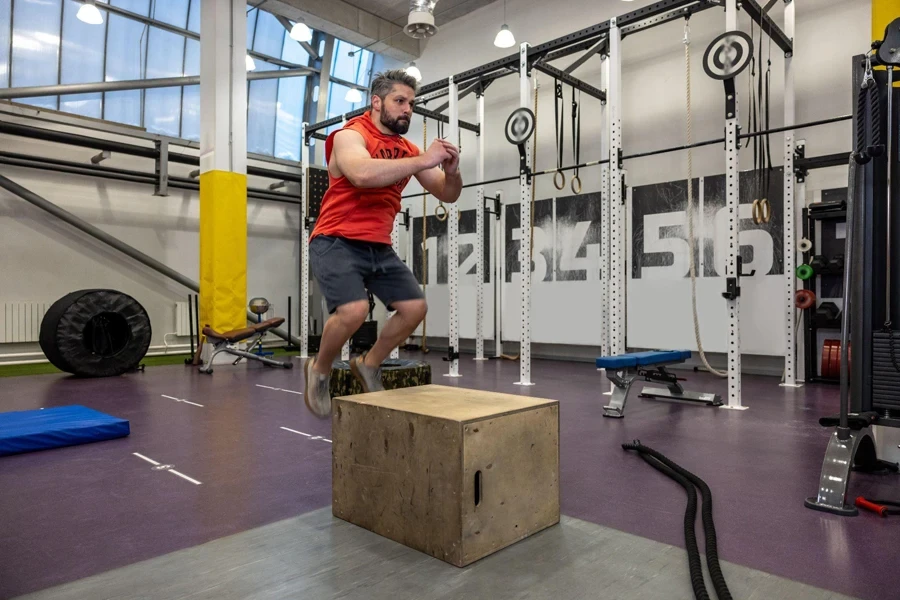
Essential Considerations for Selecting the Ideal Plyo Box
Material and Construction
When selecting plyo boxes for your training facility, it’s crucial to carefully consider the materials and construction methods employed in their design. Plyo boxes are commonly crafted from three primary materials: wood, foam, and steel, each offering distinct advantages tailored to specific training needs and environments.
Wooden plyo boxes are renowned for their robust construction and long-lasting durability, making them a staple in many high-performance gyms. These boxes are built to withstand the rigors of intense training sessions, providing a stable platform for explosive plyometric exercises. However, the inherent weight of wooden boxes can make them more challenging to move around the facility, and they may require some assembly upon arrival.
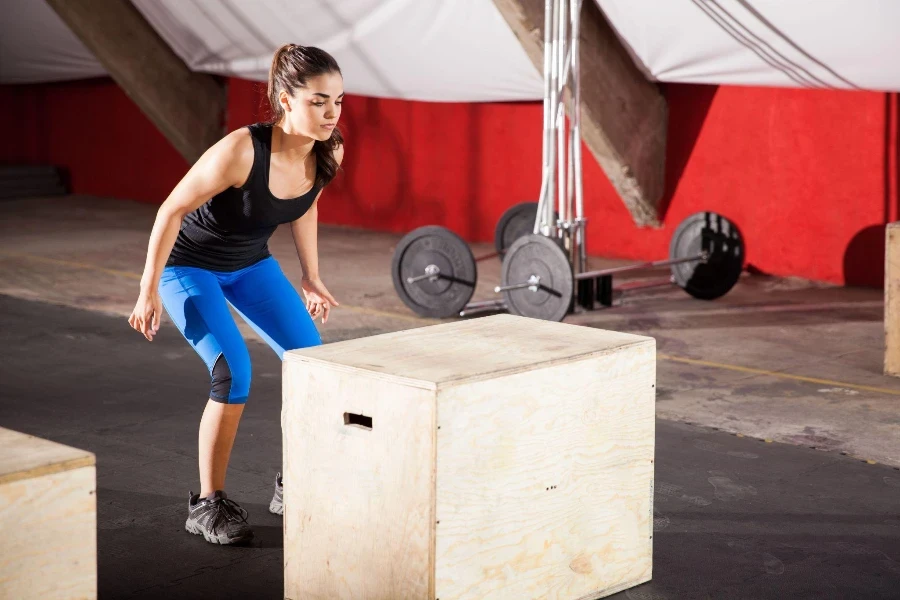
For those prioritizing safety and comfort, foam plyo boxes present an appealing alternative. These boxes feature a dense foam core encased in a durable, non-slip covering, offering a softer landing surface that reduces the risk of impact-related injuries. Many foam boxes are designed with a stackable configuration, allowing for space-efficient storage when not in use.
Steel plyo boxes represent the pinnacle of stability and durability, making them an ideal choice for facilities catering to elite athletes and demanding training regimens. The unyielding nature of steel ensures that these boxes remain steadfast during even the most explosive movements. However, the premium materials and construction methods used in steel plyo boxes often come at a higher price point compared to their wooden and foam counterparts.
Size and Height Options
When selecting plyo boxes for your training facility, it’s crucial to carefully evaluate the diverse range of size and height options at your disposal. These sturdy, versatile training tools are commonly available in heights spanning from a modest 12 inches to an impressive 30 inches, catering to athletes of varying skill levels and training objectives. Some innovative models boast adjustable or stackable designs, empowering you to effortlessly customize the height to suit specific exercises or progressions.
For novice athletes just embarking on their plyometric journey, lower height options provide a safe and accessible starting point, allowing them to focus on proper form and technique without undue risk. As their confidence and proficiency grow, you can gradually introduce taller boxes to keep them engaged and challenged. Conversely, advanced athletes with well-honed skills and explosive power may gravitate towards the tallest boxes in your arsenal, pushing their limits and maximizing the intensity of their training.
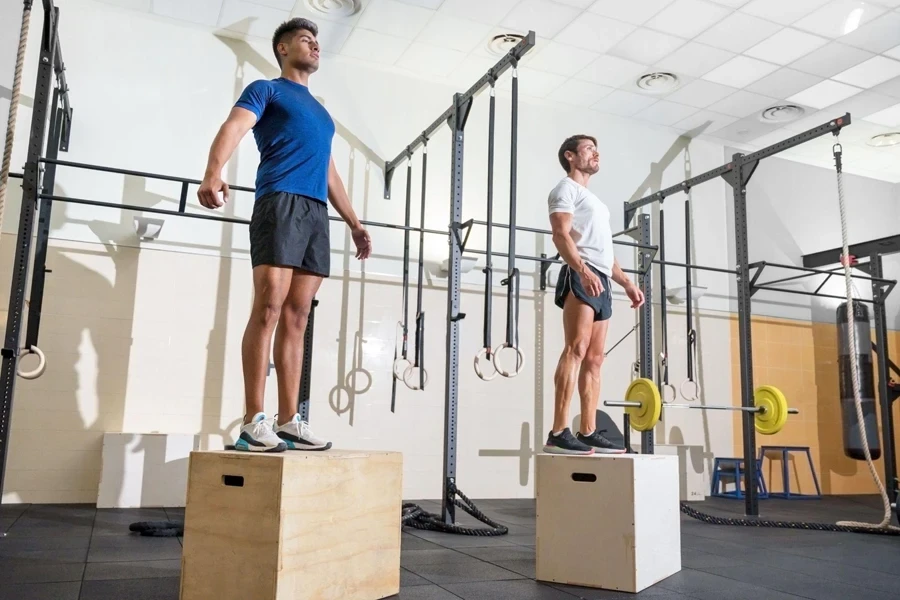
Stability and Weight Capacity
When selecting plyo boxes for your training facility, stability and weight capacity are paramount considerations to ensure the safety and effectiveness of your clients’ workouts. Opt for plyo boxes that feature a wide, sturdy base and non-slip surfaces, providing a secure foundation for explosive plyometric movements. These design elements are crucial in preventing the box from tipping or sliding during dynamic exercises, minimizing the risk of injury and allowing users to focus on their performance with confidence.
It’s equally important to assess the weight capacity of the plyo boxes you’re considering, especially if your facility caters to a diverse clientele with varying body types and fitness levels. High-quality plyo boxes can support up to an impressive 450 pounds, accommodating users of all sizes and enabling the incorporation of weighted exercises for advanced training[5]. This robust weight capacity ensures that your plyo boxes can withstand the demands of intense workouts, providing a reliable and durable training tool for your clients.
When evaluating the stability and weight capacity of plyo boxes, pay close attention to the materials and construction methods used. Boxes crafted from dense, impact-resistant foam cores and reinforced with sturdy outer shells offer superior stability and longevity. Additionally, look for models with reinforced corners and edges, as these high-stress areas are prone to wear and tear over time.
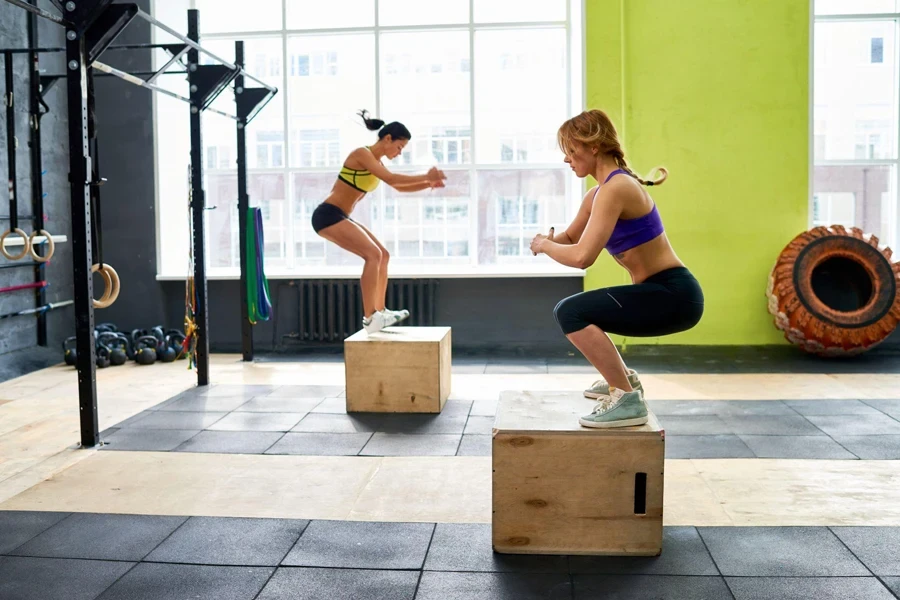
Safety Features
When selecting plyo boxes for your training facility, prioritizing safety is of utmost importance to protect your clients and minimize the risk of injuries. Opt for models that feature thoughtfully designed rounded edges and corners, which can significantly reduce the severity of impact during missed jumps or landings. This attention to detail demonstrates your commitment to providing a secure training environment for your clients.
To further enhance safety, look for plyo boxes with non-slip surfaces, such as textured coatings or strategically placed rubber feet. These features provide essential traction and stability, ensuring that the box remains firmly in place during explosive movements and reducing the likelihood of slips or falls. By investing in plyo boxes with superior grip, you can give your clients the confidence to push their limits while minimizing the risk of accidents.
Some advanced plyo box models take safety to the next level by incorporating soft foam padding or durable vinyl upholstery. These materials serve to cushion impacts and soften landings, reducing the risk of scrapes, bruises, and more serious injuries. The added layer of protection not only enhances the overall training experience but also showcases your dedication to providing top-quality equipment that prioritizes the well-being of your clients.
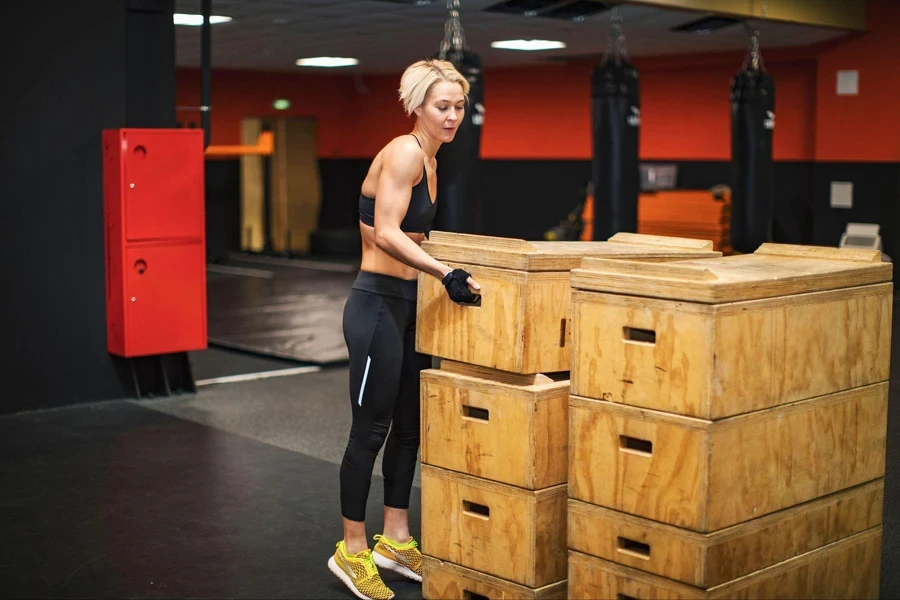
Portability and Storage
If your facility has limited space or requires frequent equipment rearrangement, consider the portability and storage options of plyo boxes. Stackable designs allow for easy storage when not in use, saving valuable floor space. Some plyo boxes also feature built-in handles or wheels for convenient transport between training areas. Lightweight materials, such as foam or plastic, can make moving the boxes easier for staff and clients.
Conclusion
Investing in the right plyo boxes is essential for gyms and fitness facilities aiming to provide their clients with safe, effective, and versatile training equipment. By considering factors such as size, material, stability, safety features, and portability, you can make an informed decision that aligns with your facility’s needs and budget. The top plyo box picks for 2024 offer a range of options to suit various preferences and training styles, ensuring that your clients can take their workouts to new heights.
Don’t forget to click the “Subscribe” button to stay updated with more articles that align with your business needs and interests on the Chovm Reads sports blog.
